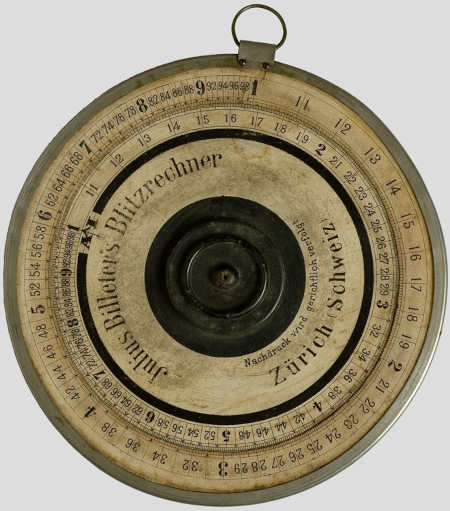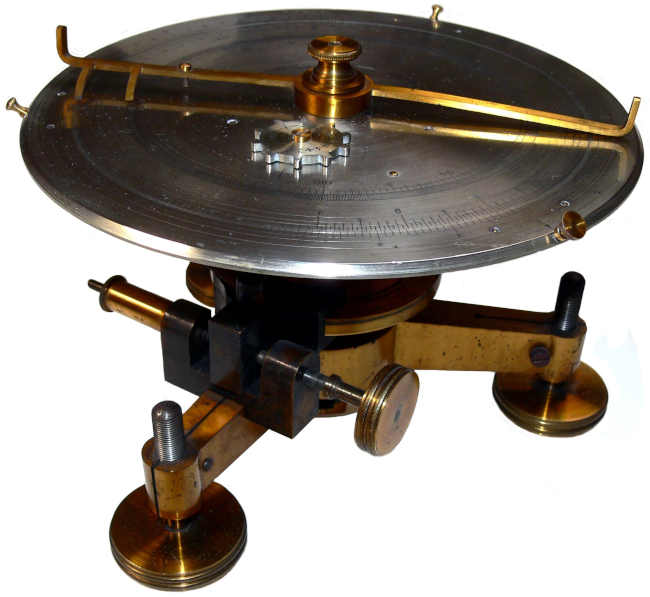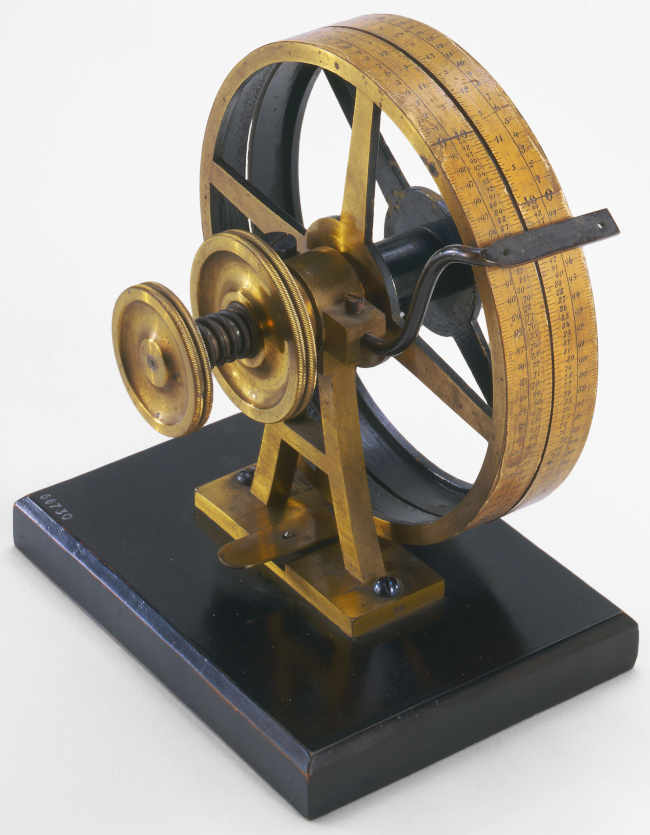Slide rules are once widespread mathematical instruments designed on the basis of the logarithms discovered by Jost Bürgi (Switzerland) and John Napier (Scotland). These instruments reduce multiplication to the addition and division to the subtraction of line segments. There are different types of instruments: linear slide rules, circular slide rules, cylindrical slide rules, and pocket watch slide rules. This analog calculating instrument dates from the 17th century and was in use until the 1970s. The English mathematician William Oughtred is considered the inventor of the slide rule. The longer the scale, the greater the accuracy of the instrument. Circular slide rules (see figs. 1-3) have largely disappeared and been forgotten. See also How does one Calculate with a Circular Slide Rule? | blog@CACM | Communications of the ACM

Fig. 1: Billeter’s circular slide rule. Julius Billeter was the first Swiss manufacturer of circular slide rules and cylindrical slide rules. The company existed only from 1893 to 1895. The term “Blitzrechner” (lightning-speed calculator) was used for various calculating aids, including calculating tables.
Credit: J.-M. Ramès/Inria

Fig. 2: The circular slide rule of Eduard Sonne (Darmstadt). This analog calculating device was built by Landsberg in Hanover.
Credit: Geodätisches Institut of the Leibniz University Hanover

Fig. 3: Beyerlen’s calculating wheel. Angelo Beyerlen, from Stuttgart, invented this logarithmic calculator (around 1893). The two wheels can be rotated in opposite directions. On the perimeters of both wheels are circular scales. The instrument is operated as are common slide rules.
Credit: Deutsches Museum, Munich
For a detailed description of slide rules, see
Bruderer, Herbert: Meilensteine der Rechentechnik, De Gruyter Oldenbourg, Berlin/Boston, 3. Auflage 2020, Band 1, 970 Seiten, 577 Abbildungen, 114 Tabellen, https://www.degruyter.com/view/title/567028?rskey=xoRERF&result=7
Bruderer, Herbert: Meilensteine der Rechentechnik, De Gruyter Oldenbourg, Berlin/Boston, 3. Auflage 2020, Band 2, 1055 Seiten, 138 Abbildungen, 37 Tabellen, https://www.degruyter.com/view/title/567221?rskey=A8Y4Gb&result=4
Bruderer, Herbert: Milestones in Analog and Digital Computing, Springer Nature Switzerland AG, Cham, 3rd edition 2020, 2 volumes, 2113 pages, 715 illustrations, 151 tables, translated from the German by John McMinn, https://www.springer.com/de/book/9783030409739
Herbert Bruderer (herbert.bruderer@bluewin.ch; bruderer@retired.ethz.ch) is a retired lecturer in the Department of Computer Science at ETH Zurich and a historian of technology.




Join the Discussion (0)
Become a Member or Sign In to Post a Comment